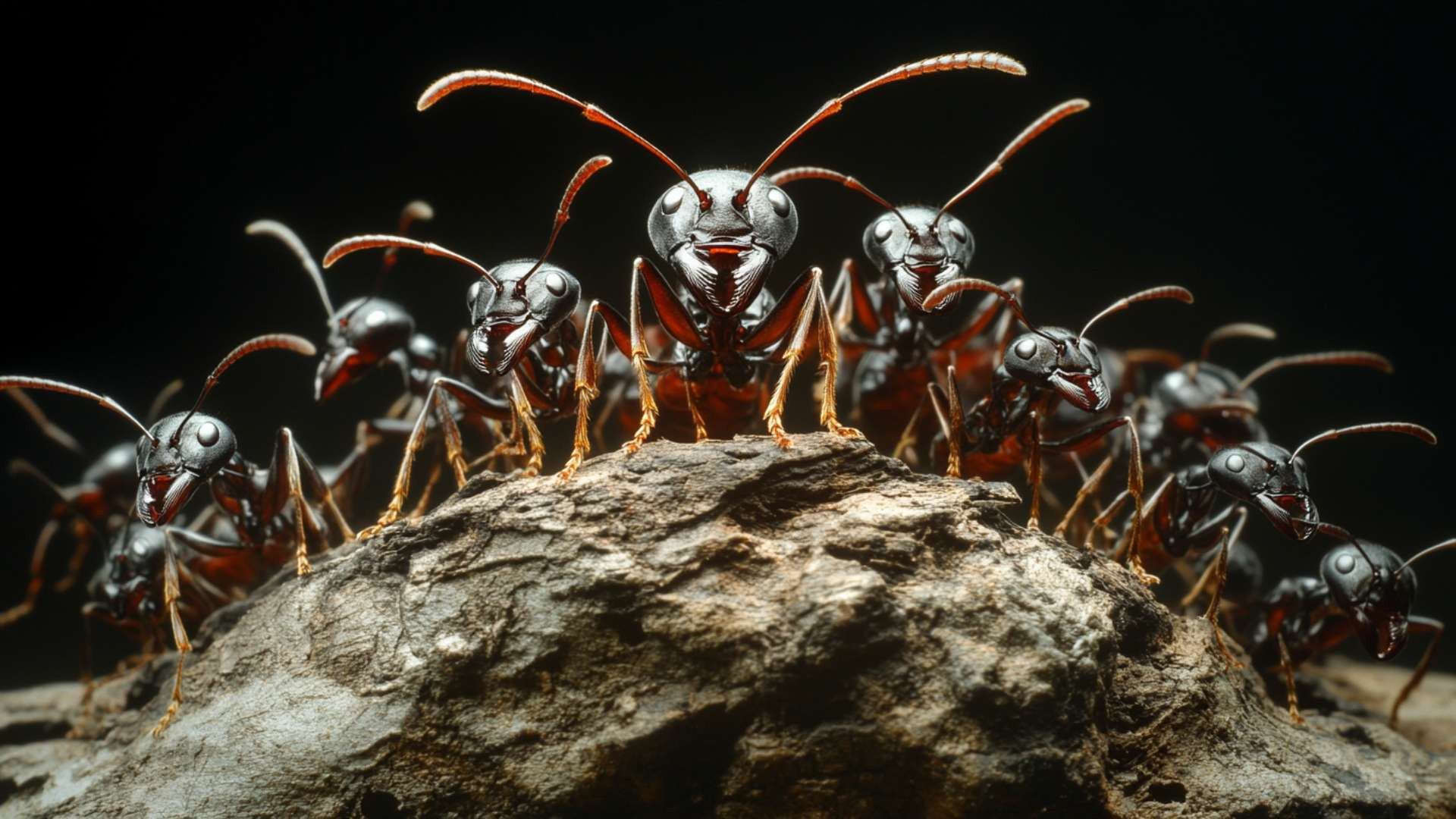Febreze, a renowned name in household air fresheners, is celebrated for its ability to banish unpleasant odors and infuse our homes with refreshing scents. From pet odors to lingering cooking smells, Febreze promises to neutralize unwanted scents, leaving spaces smelling clean and inviting. Its effectiveness lies in its unique formula, designed to trap and eliminate odor molecules rather than simply masking them with fragrance.
The core of Febreze’s odor-fighting prowess is cyclodextrin, a key ingredient that encapsulates and neutralizes odor molecules at their source. This mechanism is what sets Febreze apart from traditional air fresheners that merely provide a temporary fragrant cover-up.
The Buzz About Bugs: Can Febreze Eliminate Flies?
This brings us to an intriguing question: can Febreze, primarily designed for odor elimination, also function as an insecticide? Specifically, could it be a solution to those persistent fly problems that plague many households?
Imagine this: you’re swatting away at a bothersome fly buzzing around your kitchen. Your hand instinctively reaches for the Febreze can on the counter. But should you actually spray it towards the fly, hoping for it to drop dead like other flying insects when sprayed with insecticides?
Let’s investigate whether this popular air freshener can double as a fly eliminator.
Decoding Febreze: Understanding Its Active Components
Cyclodextrin: The Odor-Trapping Maestro
Febreze’s effectiveness in eliminating odors is largely attributed to its active ingredients, with cyclodextrin taking center stage. Cyclodextrin, a plant-derived complex carbohydrate, is the workhorse behind Febreze’s odor-neutralizing capabilities.
This fascinating molecule has a unique structure, resembling a microscopic basket. This “basket” is designed to trap and encapsulate odor molecules, effectively removing them from the air and preventing them from reaching our noses.
When Febreze is sprayed, the cyclodextrin molecules disperse, ready to capture volatile organic compounds (VOCs) that cause unpleasant smells. By trapping these odor molecules, cyclodextrin eliminates the scent at its source, rather than just masking it with another fragrance.
How Febreze Ingredients Work to Neutralize Odors
Febreze’s approach to air freshening is rooted in odor elimination, a step beyond simply covering up smells. Traditional air fresheners often rely on perfumes to mask unwanted scents. Febreze, however, targets the odors themselves, neutralizing and removing them.
Upon spraying Febreze, the active ingredients, primarily cyclodextrin, get to work. Cyclodextrin molecules ensnare VOCs, the culprits behind bad smells, within their unique cavity-like structures. This encapsulation prevents these odor molecules from evaporating and reaching our olfactory senses, thus eliminating the perception of the bad smell.
Interestingly, this odor-trapping mechanism might also have implications for insect control. Some insects, including flies, rely heavily on pheromones for communication. By disrupting these scent trails, Febreze might inadvertently play a role in repelling or disorienting certain pests.
Cyclodextrin, Febreze’s star ingredient, is instrumental in odor elimination through its molecular trapping action. This innovative mechanism distinguishes Febreze from conventional air fresheners, offering a true neutralization of odors rather than a superficial cover-up. The next time you use Febreze, remember it’s actively working to eliminate odors at a molecular level.
Flies and Their Sensory World
Flies, those ubiquitous insects we often find buzzing around our homes, navigate their world through a sophisticated sensory system. To understand how Febreze might affect them, it’s crucial to explore their sensory perceptions, particularly their sense of smell. Flies, like many insects, rely heavily on their olfactory senses to find food, locate mates, and avoid danger.
Their antennae are equipped with an array of receptors that detect a wide range of odors. This highly developed sense of smell is essential for their survival, guiding them to ripe fruit, decaying matter (their food sources), and potential breeding grounds.
Flies are also known to communicate using pheromones, chemical signals that play a role in attracting mates and marking territory. These pheromones, like food odors, are detected through their sensitive olfactory system.
Understanding the importance of scent in a fly’s life is key to assessing how external scents, like those from air fresheners, might impact them. Strong artificial fragrances could potentially disrupt their ability to locate food sources or interfere with their communication, leading to confusion or avoidance of treated areas.
The Impact of Febreze on Flies: Exploring the Evidence
Air Fresheners and Flies: An Unconventional Approach?
When dealing with unwanted flies buzzing around your home, various solutions come to mind, from fly swatters to insecticides. But could a simple air freshener like Febreze offer an unexpected way to manage these flying pests? Let’s explore the potential effects of Febreze on flies and see if it can be more than just an odor eliminator.
Scent Sensitivity: How Flies React to Different Smells
Research has shown that flies are indeed sensitive to a variety of scents, and certain odors can be quite repellent to them. Studies exploring insect behavior have indicated that strong fragrances, particularly certain essential oils, can deter flies and other insects.
Flies use their sense of smell to navigate and find resources, so introducing strong or unfamiliar scents can disrupt their orientation and behavior. While some scents may attract flies (like the smell of rotting food), others can be distinctly unpleasant or even toxic to them.
It’s been observed that certain chemical components found in air fresheners can be irritating or even harmful to insects in high concentrations. However, the typical concentrations found in household air fresheners are designed for human use and odor control, not necessarily for insect extermination.
Febreze’s Potential Role in Fly Management
Cyclodextrin, the active ingredient in Febreze, is known for its odor-encapsulating properties. While its primary function is not insect control, its effect on flies could stem from its ability to interfere with their sense of smell and disrupt their environment.
Anecdotal evidence suggests that spraying Febreze in areas frequented by flies might temporarily reduce their presence. This could be due to the strong fragrance disrupting their scent trails or making the environment less appealing to them. However, it’s important to distinguish between repelling flies and actually killing them.
While Febreze might create an environment that flies find less attractive, there’s no strong scientific evidence to suggest it’s toxic to flies or capable of killing them directly in typical household use. Its effect is more likely to be a deterrent or a temporary masking of attractants rather than a lethal solution.
Balancing Act: Repellency vs. Toxicity
When considering using air fresheners like Febreze for fly control, it’s crucial to have realistic expectations. While some components might have repellent properties, Febreze is not formulated as an insecticide. Its main purpose is to freshen air, not to eliminate pests.
Relying solely on Febreze for fly control is unlikely to be effective for significant infestations. For serious fly problems, targeted insecticides or professional pest control methods are generally necessary. Febreze might be considered a very mild, supplementary measure at best, perhaps helping to make an area less appealing to flies temporarily.
In summary, while flies are sensitive to scents and may react to the strong fragrance of Febreze, it’s not designed or potent enough to be considered a fly killer. Its effect is more likely to be a temporary repellent or disruptor rather than a lethal control method. For effective fly management, integrated pest control strategies are recommended.
Cyclodextrin and Fly Control: A Closer Look
Cyclodextrin’s Properties and Pest Management Applications
Cyclodextrin, the key ingredient in Febreze, is recognized for its unique ability to trap and encapsulate molecules, primarily odors. This property has made it valuable in various applications, including air fresheners and, interestingly, certain pest management products. While not a direct insecticide, cyclodextrin’s mechanism of action can play a role in disrupting pest behavior.
In the context of fly control, cyclodextrin’s odor-binding capability might indirectly affect flies by interfering with their scent-based navigation and communication. Flies rely heavily on their sense of smell to locate food sources, breeding sites, and to communicate through pheromones. By encapsulating and neutralizing odors, cyclodextrin could potentially disrupt these processes.
Potential Effects on Fly Behavior and Populations
Beyond just masking odors that might attract flies, cyclodextrin could have more subtle effects on fly populations. If Febreze is sprayed in areas where flies congregate or forage, the cyclodextrin could disrupt the scent trails they use to find food or communicate. This disruption might disorient flies or make it harder for them to locate resources, potentially leading them to leave the treated area.
For instance, if flies are attracted to decaying fruit in a kitchen, spraying Febreze might not kill them, but it could reduce the attractiveness of the fruit by neutralizing the odor cues that draw flies in. This could lead to fewer flies in that specific location, as they are no longer as strongly drawn to the food source.
However, it’s important to note that cyclodextrin is not toxic to flies. It doesn’t act as a poison or a direct insecticide. Its effect is more about environmental modification – making an area less appealing or more confusing for flies due to scent disruption.
In scenarios where fly infestations are mild or localized, and where the goal is to deter rather than exterminate, Febreze might play a limited supplementary role. For example, in outdoor settings where flies are attracted to garbage bins, spraying Febreze around the bins might help reduce the immediate fly presence by masking the attractive odors.
However, for significant fly infestations or when seeking complete elimination, cyclodextrin-based air fresheners alone are insufficient. Effective fly control typically requires addressing breeding sites, using traps, or applying insecticides. Febreze, with its cyclodextrin, may offer a gentle, non-toxic approach to making spaces less fly-friendly through scent manipulation, but it is not a primary fly control solution.
Practical Use and Limitations for Fly Management
 close-up-of-woman-s-hands-cleaning-a-sofa-at-home-min
close-up-of-woman-s-hands-cleaning-a-sofa-at-home-min
Alt text: A woman’s hands are shown in a close-up, cleaning a sofa at home, highlighting the household cleaning context of air freshener use.
Using Febreze as a Complementary Fly Deterrent
When dealing with flies, Febreze can be considered as a supplementary tool rather than a primary solution. Its role is more in deterring flies from certain areas rather than eliminating them outright. To use Febreze effectively for this purpose, identify areas where flies are most prevalent. Common fly hotspots include kitchens, near garbage bins, and around pet areas.
Lightly spraying Febreze in these locations might help make the environment less attractive to flies. This is especially true if flies are drawn to odors that Febreze can neutralize. For example, if kitchen odors are attracting fruit flies, using Febreze to reduce these odors might make the kitchen less appealing to them.
Combining Febreze with Proven Fly Control Methods
To maximize effectiveness, Febreze should be used in conjunction with established fly control strategies. Effective fly management usually involves multiple approaches. Fly traps, for instance, are highly effective in capturing and reducing fly populations. Baits and sticky traps can be placed in areas with high fly activity to directly target and remove flies.
Good sanitation practices are also crucial. Flies are attracted to decaying organic matter, so keeping areas clean, promptly removing garbage, and cleaning up spills can significantly reduce fly attractants. For more persistent infestations, insecticides designed for fly control may be necessary. These can range from sprays to foggers, depending on the severity of the problem.
Using Febreze in combination with these methods can create a multi-layered approach. Febreze might help in making an area less appealing to flies due to odor disruption, while traps and sanitation directly reduce fly numbers and attractants.
Limitations: Fly Species and Infestation Levels
It’s important to acknowledge the limitations of using Febreze for fly control. Its effectiveness can vary depending on the species of fly and the severity of the infestation. Some fly species might be less sensitive to the scents in Febreze, or the attractants drawing them might be too strong for Febreze to effectively mask.
In cases of heavy infestations, especially where breeding sites are not addressed, Febreze’s impact will likely be minimal. It’s not a substitute for comprehensive pest control measures when dealing with significant fly problems. Moreover, Febreze is designed for air freshening, not pest control, and should not be relied upon as a primary or sole method for fly elimination.
In summary, while Febreze can be a mild deterrent for flies, particularly when used to reduce odor attractants, it is most effective as part of an integrated pest management approach. For significant fly problems, combining Febreze with traps, sanitation, and targeted insecticides is recommended.
Eco-Friendly Fly Control Alternatives
Natural Fly Repellents: An Introduction
For those seeking environmentally conscious ways to manage flies, numerous natural remedies offer effective repellency without harsh chemicals. These eco-friendly alternatives often utilize ingredients found in your home, such as essential oils and vinegar, providing a safer approach to fly control for families and pets.
Exploring Essential Oils, Vinegar, and Homemade Solutions
Essential oils are a popular natural choice for repelling flies. Scents like peppermint, lavender, eucalyptus, and citronella are known to be disliked by flies. Diluting these essential oils with water and spraying them around doorways, windows, and fly-prone areas can create a natural barrier. Cotton balls soaked in essential oils can also be placed strategically around the house.
Vinegar, especially apple cider vinegar, is another effective repellent. While fruit flies are initially attracted to vinegar, they can become trapped and drowned in it. A simple trap can be made by filling a jar with apple cider vinegar and adding a drop of dish soap to break the surface tension. For general fly repellency, white vinegar can be diluted with water and used as a cleaning spray on surfaces, deterring flies with its scent.
Other homemade repellents include herbs like basil, bay leaves, and cloves. Placing these herbs near windows or in areas where flies are common can help keep them away. Citrus peels, particularly lemon and orange, also emit scents that flies dislike. Placing citrus peels around your home can act as a natural fly deterrent.
While these natural remedies are generally safer and more environmentally friendly, they may require more frequent application than chemical solutions. Their effectiveness can also vary depending on the fly species and the specific environment. However, for those seeking a greener approach to fly control, these natural alternatives offer a viable and pleasant-smelling option.
Conclusion
In conclusion, when it comes to the question of whether Febreze kills flies, the answer is nuanced. Febreze is not designed or intended to be a fly killer, and there is no scientific evidence to suggest it is toxic to flies. However, its active ingredient, cyclodextrin, and its strong fragrances may play a role in deterring or repelling flies by disrupting their sense of smell and making treated areas less attractive.
Febreze can be considered a very mild, supplementary tool in fly management, primarily for making spaces less appealing to flies through odor control. It should not be relied upon as a primary or effective method for eliminating fly infestations.
For effective fly control, a combination of strategies is necessary. This includes good sanitation practices to remove fly attractants, the use of fly traps to directly reduce fly populations, and, in cases of significant infestation, targeted insecticides. Eco-friendly options like essential oils and vinegar solutions offer natural alternatives for repelling flies.
Ultimately, while Febreze is excellent for freshening air and eliminating odors, it is not a fly killer. Its role in fly management is limited to potential mild repellency, and it is best used as part of a comprehensive pest control strategy. For those seeking to eliminate flies, direct and targeted methods are far more effective than relying on air fresheners.
Banish Flies with Proven Pest Control Solutions!

Alt text: A pest control service truck is parked, showcasing professional pest management as an effective solution for fly infestations.
If flies are constantly bothering you, it’s time to consider professional help. Effective fly control requires targeted strategies and expertise that professional pest control services can provide. Don’t let flies take over your space – opt for proven pest control methods for a fly-free environment today!
Contact a local pest control service to schedule an inspection and effective fly control solutions to reclaim your home or business from these persistent pests.
Frequently Asked Questions:
Can Febreze Fabric Refresher kill flies?
No, Febreze Fabric Refresher is not designed to kill flies.
Is air freshener effective for killing flies?
Air fresheners are not an effective solution for killing flies.
What scents repel flies?
Scents like peppermint, lavender, eucalyptus, and citronella, as well as vinegar and citrus, can repel flies.
What type of spray is effective for killing flies?
Insecticide sprays specifically designed for flying insects are effective for killing flies.
If you found this article helpful, you might also be interested in these related topics:
Natural Ways to Repel Flies (Example Link)
Effective Fly Control Methods for Your Home (Example Link)
